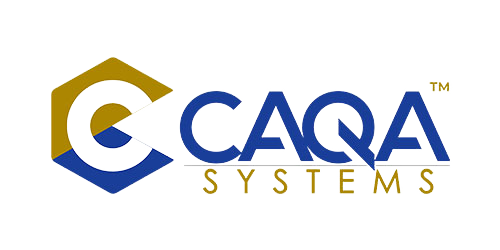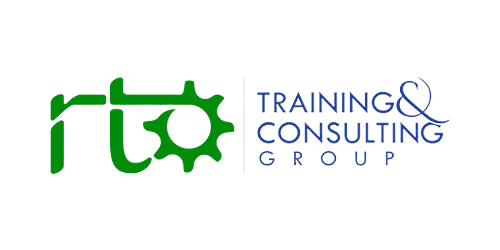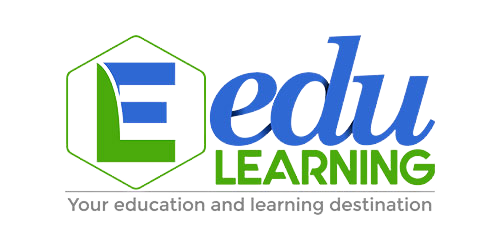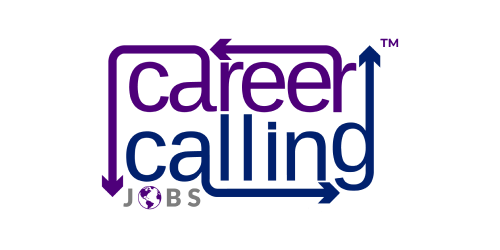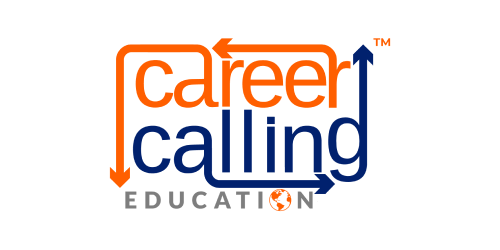As the dual imperatives of technological advancement and environmental sustainability reshape global economies, a remarkable convergence is emerging that holds profound implications for vocational education and training. Artificial intelligence, once viewed primarily as a driver of automation in traditional industries, is increasingly proving to be a powerful catalyst for environmental innovation across sectors. From optimising renewable energy systems to revolutionising sustainable agriculture, enhancing green building design to advancing circular economy initiatives, AI applications are accelerating progress toward sustainability goals while simultaneously creating entirely new categories of "green jobs" that blend technical expertise with environmental stewardship. This intersection of AI and sustainability represents both an extraordinary opportunity and a significant challenge for vocational education providers who must now prepare learners for careers that may not have existed even five years ago. By examining how AI is transforming key sustainability-focused industries and identifying the emerging skill profiles these transformations demand, vocational education leaders can develop forward-thinking programs that position their institutions—and more importantly, their graduates—at the forefront of the green economy's next wave.
The renewable energy sector provides perhaps the most visible example of AI's transformative impact on sustainability-focused industries. Traditional approaches to renewable energy deployment have been hampered by intermittency challenges, grid integration complexities, and optimisation difficulties that have limited effectiveness and economic viability. AI systems are now addressing these constraints through increasingly sophisticated applications. At Spain's Plataforma Solar de Almería, machine learning algorithms continuously analyse weather patterns, electricity demand forecasts, and system performance data to optimise the operation of concentrated solar power installations, increasing energy yield by up to 30% compared to conventional management approaches. Similar AI-driven optimisation systems have transformed wind farm operations, with General Electric's digital wind farm technology using machine learning to adjust individual turbine parameters in real-time based on changing wind conditions, increasing annual energy production by up to 20% across installations. Beyond operational optimisation, AI is revolutionising maintenance approaches through predictive systems that identify potential component failures before they occur, dramatically reducing downtime and extending equipment lifespan. These applications are creating demand for an entirely new category of renewable energy professionals—technicians who understand both the physical infrastructure of energy systems and the AI technologies that increasingly control them.
The skill profile of this emerging "smart energy technician" represents a significant evolution from traditional roles. Beyond foundational knowledge of electrical systems, mechanical components, and safety protocols, these professionals require competencies in data analysis, sensor technology, network connectivity, and AI system monitoring that weren't previously associated with field technician positions. At Denmark's Technical University, one of the first institutions to develop targeted training for this emerging role, program director Morten Jensen explains: "We're seeing the renewable energy technician evolve from someone who primarily performs hands-on maintenance to a professional who uses sophisticated digital interfaces to monitor, analyse, and optimise complex systems where physical infrastructure and artificial intelligence converge. They need to understand when to trust AI recommendations and when human inspection is necessary, how to interpret system data to identify potential issues the AI might miss, and how to effectively collaborate with both remote engineering teams and automated systems. It's a fundamentally different skill set than what was required even a decade ago." This evolution represents both a challenge and an opportunity for vocational education providers who must now bridge traditionally separate domains of knowledge while maintaining the practical, hands-on focus that distinguishes effective technical training.
Similar transformations are unfolding in sustainable agriculture, where AI applications are enabling precision farming approaches that dramatically reduce environmental impact while increasing productivity. Traditional agricultural methods often applied uniform treatments across entire fields despite significant variations in soil conditions, moisture levels, pest pressure, and other critical factors. AI-enhanced precision agriculture now enables variable management at previously impossible scales through systems that integrate data from soil sensors, satellite imagery, drone monitoring, weather forecasts, and historical performance. At the Netherlands' WUR Experimental Farm, AI platforms continuously analyse this multi-source data to generate precise recommendations for irrigation, fertilisation, pest management, and harvest timing optimised for specific field zones as small as a few square meters. The environmental benefits are substantial: water usage reductions of up to 30%, fertiliser application decreased by 15-20%, and pesticide use cut by 35-40% while maintaining or improving yields. These systems are creating demand for "agricultural technology specialists" who can deploy, calibrate, maintain, and interpret AI-enhanced farming systems while understanding their integration with biological processes and environmental factors.
The educational pathway for these agricultural technology specialists represents a significant departure from traditional agricultural training. "We've had to completely reimagine our curriculum," explains Carmen Valdez, director of Argentina's Instituto Nacional de Tecnología Agropecuaria's educational division. "Our programs now combine traditional agricultural knowledge—plant biology, soil science, pest management—with data analytics, sensor technology, drone operation, GPS systems, and the fundamentals of artificial intelligence that tie these elements together. Students need to understand not just how plants grow, but how data flows through agricultural monitoring systems, how algorithms process that information, and how to effectively integrate AI recommendations with their own agricultural expertise. It's no longer sufficient to teach farming practices in isolation from the technology that increasingly guides them." This integration requires vocational educators to collaborate across previously separate domains, creating partnerships between agricultural and technology instructors to develop cohesive programs that authentically reflect the converging nature of the field rather than treating technology as a separate add-on to traditional agricultural training.
The green building sector offers another compelling example of AI's transformative impact on sustainability-focused industries. Traditional approaches to energy-efficient construction and renovation relied heavily on standardised best practices and limited monitoring capabilities that often failed to optimise performance for specific buildings and usage patterns. AI-enhanced building management systems now enable unprecedented optimisation through continuous analysis of occupancy patterns, weather conditions, equipment performance, and user preferences to dynamically adjust heating, cooling, lighting, and other systems. At Singapore's Zero Energy Building project, AI systems reduced energy consumption by an additional 15% beyond initial design efficiencies while improving occupant comfort by learning and anticipating usage patterns specific to the building's actual operation rather than relying on generalised models. Beyond operational optimisation, AI is transforming building design itself through generative systems that can evaluate thousands of potential configurations to identify optimal solutions for energy efficiency, material usage, constructability, and cost considerations. These applications are creating demand for "intelligent building specialists" who understand both traditional construction practices and the increasingly sophisticated technologies that control modern high-performance buildings.
The preparation of these specialists requires vocational education that transcends traditional boundaries between construction trades, energy systems, and information technology. "The building performance professional of today needs to understand everything from envelope construction and mechanical systems to sensor networks, data analytics, and machine learning fundamentals," notes Hiroshi Tanaka, curriculum director at Japan's Advanced Building Technology Institute. "When a building's AI system recommends adjusting ventilation patterns or identifies an anomaly in heating system performance, the technician needs to understand both the physical infrastructure involved and the algorithmic reasoning behind the recommendation. This requires us to develop integrated programs where students learn to move fluidly between physical and digital domains rather than specialising in one or the other." This integration presents particular challenges for vocational education institutions with traditionally separate departments for construction, electrical systems, and information technology, requiring collaborative curriculum development that mirrors the converging nature of the industry itself.
The circular economy represents another frontier where AI is enabling sustainability advances that were previously impractical at commercial scale. Traditional recycling and materials recovery operations have been limited by sorting inefficiencies, contamination challenges, and identification difficulties that restricted the economic viability of many recovery processes. Computer vision systems enhanced by machine learning now enable automated sorting at speeds and accuracy levels impossible for human operators, dramatically improving recovery rates while reducing processing costs. At Finland's Zenrobotics recycling facility, AI-powered robotic sorting systems identify and separate dozens of material categories in mixed construction waste, recovering valuable resources that would previously have been landfilled while creating detailed material flow data that informs upstream waste reduction strategies. Beyond material recovery, AI systems are transforming product design itself through platforms that can analyse thousands of potential configurations to optimise for disassembly, component reuse, and material recoverability throughout product lifecycles. These applications are creating opportunities for "circular systems technicians" who understand both material science fundamentals and the AI technologies that increasingly enable advanced recovery processes.
Training for these circular economy roles requires vocational education that combines traditional waste management and materials processing knowledge with emerging technology skills. "Our circular economy program integrates traditional content on material identification, processing equipment, and handling protocols with newer elements focused on automated sorting systems, vision-based identification technologies, and data analysis for material flow optimisation," explains Elisa Moretti, program coordinator at Italy's Centro Formazione Professionale per l'Economia Circolare. "Students need to understand not just how to process materials manually, but how to optimise, maintain, and troubleshoot the increasingly sophisticated AI systems that handle much of the identification and sorting work in modern facilities. They also need to understand how to interpret and apply the rich data these systems generate to continually improve recovery processes." This integration challenges vocational educators to develop authentic learning experiences that reflect the technology-enhanced nature of modern circular economy operations while maintaining the practical, hands-on focus essential for effective technical training.
Transportation and logistics provide another compelling example of how AI is transforming sustainability-focused roles. Traditional approaches to fleet management, route planning, and modal integration often failed to optimise for energy efficiency and emissions reduction at the system scale. AI-powered logistics platforms now enable unprecedented optimisation through continuous analysis of route options, vehicle loading, traffic patterns, weather conditions, and energy consumption profiles to identify the lowest-impact transportation solutions. At the Port of Rotterdam's Smart Logistics Center, AI systems coordinate multimodal shipping operations to reduce emissions by 20% through improved loading factors, reduced idling time, and optimised modal transfers that would be impossible to manage through conventional planning approaches. The maintenance of low-emission vehicle fleets has similarly been transformed through predictive systems that optimise service intervals based on actual usage patterns and component performance rather than standardised schedules, extending vehicle lifespan while reducing resource consumption. These applications are creating demand for "sustainable mobility specialists" who understand both transportation fundamentals and the AI technologies that increasingly coordinate and optimise these systems.
The educational pathway for these specialists illustrates the interdisciplinary nature of emerging green jobs. "Our sustainable transportation program now includes traditional content on vehicle systems, maintenance procedures, and logistics fundamentals alongside newer modules focused on telematics, energy management systems, and predictive maintenance platforms," notes Richard Chen, program director at Singapore Polytechnic's Sustainable Transportation Institute. "Students need to understand not just how to maintain electric drivetrains and alternative fuel systems, but how to interpret data from vehicle telematics, interact with fleet optimisation platforms, and troubleshoot increasingly sophisticated predictive maintenance systems. It's a fundamentally different skill profile than traditional automotive or logistics training, requiring us to create new integrated curricula rather than simply adding technology modules to existing programs." This integration represents both a challenge and an opportunity for vocational educators to develop truly forward-looking programs that prepare students for the transportation sector's ongoing technological and environmental transformation.
These examples across diverse sectors highlight several common themes with significant implications for vocational education providers. First, sustainability-focused roles increasingly require integration of domain-specific technical knowledge with data analysis capabilities, sensor technology understanding, and AI system interaction skills that transcend traditional occupational boundaries. Second, the rapid evolution of these technologies demands educational approaches that develop adaptability and lifelong learning capabilities alongside specific technical skills that may evolve significantly over a graduate's career. Third, effective training increasingly requires authentic learning environments that accurately reflect the technology-enhanced nature of modern workplaces rather than treating digital systems as separate from hands-on technical work. Finally, these emerging roles often involve higher levels of system thinking, problem-solving, and decision-making than traditionally associated with technical positions, as AI systems increasingly handle routine tasks while humans focus on exception management, oversight, and improvement activities that require contextual understanding and judgment.
For vocational education providers considering how to address these emerging needs, several implementation strategies have proven effective among early adopters. First, successful programs typically involve industry partners directly in curriculum development, equipment specification, and even instructional delivery to ensure training accurately reflects current workplace practices and technologies. Denmark's Technical College København, for example, operates a rotating industry fellowship program where professionals from sustainability-focused sectors spend six-month periods teaching in technical programs while participating in curriculum updates that incorporate emerging technologies and practices. Second, modular program structures enable more responsive adaptation to rapidly evolving technologies than traditional fixed curricula. Australia's Green Skills Federation has pioneered "stack-and-build" qualifications where foundational sustainability and technology modules can be combined with specialised sector-specific components that can be updated independently as technologies evolve, allowing students to develop coherent skill profiles while enabling more agile program evolution. Third, authentic project-based learning approaches that challenge students to apply both technical and digital skills to real-world sustainability challenges have proven particularly effective in developing the integrated capabilities these emerging roles demand.
The most forward-thinking institutions are also reconsidering traditional boundaries between vocational and higher education pathways, as these AI-enhanced sustainability roles often require deeper theoretical understanding than historically associated with technical positions. "We're seeing the emergence of what might be called 'T-shaped' green technology professionals," explains Michael Williams, director of British Columbia's Center for Sustainable Technology Education. "They need deep practical skills in specific technical domains—renewable energy systems, green building technologies, sustainable agriculture practices—but also a broader understanding of data systems, algorithmic thinking, and environmental science that allows them to work effectively at the intersection of sustainability and technology. This requires us to reconsider traditional distinctions between vocational and academic education, creating more flexible pathways that combine hands-on technical training with deeper conceptual understanding than our programs have traditionally provided." This evolution challenges established institutional structures but creates opportunities for innovative programs that more effectively prepare students for emerging roles that transcend traditional occupational categories.
The funding and resource implications of these emerging training needs warrant particular attention from vocational education leaders and policymakers. The equipment, software, and expertise required to deliver authentic training for AI-enhanced sustainability roles typically exceed those of traditional technical programs, creating potential barriers for institutions with limited resources. Shared regional training facilities, public-private partnership models, and hybrid delivery approaches combining virtual simulation with targeted hands-on experience offer potential solutions, but require coordinated investment and collaborative planning that transcends individual institutions. The rapid evolution of these technologies also necessitates ongoing professional development for instructors, many of whom were trained before AI applications became widespread in their technical fields. Without strategic attention to these resource requirements, there is a significant risk that training for these emerging high-opportunity roles will concentrate in well-resourced institutions, potentially exacerbating rather than addressing equity concerns in access to growing green technology careers.
For students and career changers considering pathways into AI-enhanced sustainability fields, the convergence of environmental and technological transformation offers unprecedented opportunities to combine purpose-driven work with stable, well-compensated careers in growing sectors. Unlike many technology roles that may be vulnerable to future automation, positions at the intersection of sustainability and AI typically involve complex contextual judgment, system oversight, and physical-digital integration that will likely remain beyond purely algorithmic capabilities for the foreseeable future. Moreover, these roles often offer direct engagement with meaningful environmental challenges while providing the satisfaction of tangible, visible outcomes often absent in purely digital work. As one recent graduate of Scotland's Renewable Energy Systems program observed: "I'm using sophisticated technology every day, but I'm not just staring at screens—I'm working with physical systems that are literally generating clean energy for my community. The AI helps me optimise these systems and identify issues before they become problems, but the work itself connects directly to the real world in ways that keep it interesting and meaningful."
As vocational education leaders navigate this rapidly evolving landscape, perhaps the most essential insight is that effective preparation for AI-enhanced sustainability roles requires not just updated technical content but fundamentally reimagined educational approaches. The artificial boundaries between physical and digital domains, between technical and analytical skills, and between practical application and theoretical understanding that have traditionally structured vocational education are increasingly misaligned with emerging workplace realities where these elements are thoroughly integrated. By developing programs that authentically reflect this integration—where students learn to move fluidly between physical systems and digital interfaces, between hands-on technical work and data-informed decision making, between specific applications and system-level understanding—vocational education providers can prepare graduates who thrive at the intersection of sustainability and technology, positioned not just to secure employment but to lead the ongoing transformation toward more environmentally sustainable and technologically enhanced industries across sectors.












